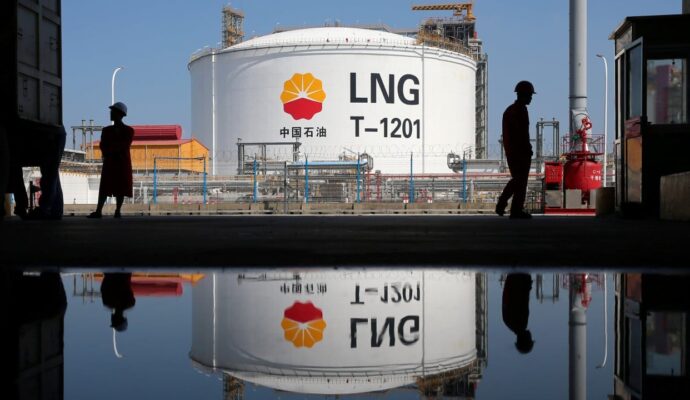
Thanks to US regional strategic primacy, Australia has been virtually immune from the threat of direct military attack since the defeat of Japan in 1945. Now that is changing. In future it will no longer be militarily impossible for China to attack Australia directly. And not just China: other major regional powers, especially India and eventually perhaps Indonesia, will have the potential to launch significant attacks on Australia.
That does not mean we now face a serious threat of Chinese military attack. Today the only circumstance in which Australia could credibly find itself under attack from China would be if Australia joined the US in a war with China over Taiwan. Reports that Australia is a target of Chinese cyber and intelligence operations do not show that Beijing poses a military threat to us, any more than our cyber and intelligence operations targeting China provide evidence that we pose a military threat to them.
It is harder to say whether China might become militarily aggressive towards us in future. We cannot assume that it will from its military buildup alone, because countries often expand their armed forces to defend themselves rather than to attack others.
But, equally, we cannot rule out the possibility that China might decide to use armed force against Australia in decades to come. Some aspects of China’s naval buildup, especially its sustained investment in aircraft carriers, which would have no useful role in a US-China war over Taiwan, suggest that it wants to be able to conduct long-range power-projection operations, which could encompass Australia.
Nonetheless, it does seem unlikely. For one thing, it is a little hard to imagine what China’s purpose might be in attacking Australia, given that we are not an easy country to invade. And if we get our defence policy right it should be possible for us to raise the cost to the point that it is not worth China’s while.
This all means that, while we should not ignore it, we should not allow the distant possibility of a Chinese military threat to dominate our thinking about China. There are many other dimensions to what is a very important, complex and ultimately inescapable relationship.
It is also a relationship of a completely unfamiliar kind. Other than our two great allies, Australia has never before encountered a country as large, as powerful, as influential in our region, as important to us economically, and with close heritage connections with such a large proportion of our population, as China.
Once we abandon the illusion that the US is going to manage China for us, we will realise that we have no choice but to find our own way. This will not be comfortable or easy. China is ruthless, demanding and completely transactional – though no more than other great powers. Over the past decade, in Canberra and around the country, exaggerated fears and a desire to stay in step with Washington have crowded out serious thinking about China itself and how the complex range of interests we have in our relationship with it can best be balanced. We have less deep expertise on China now than we had 30 years ago. That has to change.
Our second big task is to rethink our relationship with the US. In the decades before the mid-1990s, there was an assumption that – in a Whig-view-of-history way – Australia was gradually but ineluctably emerging from dependence to independence as we left our colonial and imperial past behind and embraced our Asian future. That died away around the time John Howard became prime minister in 1996, when it seemed to many people that the future was America’s, and that Australia’s future was to become ever more tightly entwined with it, strategically, economically and culturally.
This was the time when a US-Australia free trade agreement seemed both essential and sufficient to guarantee Australia’s economic future, and when America’s place as the world’s dominant military power seemed unchallengeable. The economic illusions of that era were soon overtaken by the hard realities of China’s rise but the strategic illusions have survived. Indeed, they were strengthened by the “war on terror” and have been intensified again by the rising fear of China. So we clung on and stopped imagining we could do anything else.
after newsletter promotion
It is often said, for example, that the intelligence relationship is so close and so important to both sides as to be indissoluble. Don’t bet on that. US access to Pine Gap as a location for its satellite ground station is valuable but far from essential. Our access to US intelligence under the Five Eyes arrangements is very beneficial and, in some ways, irreplaceable, in that it provides intelligence we could not get in other ways. But that does not mean we could not get by without it. We certainly could.
As things get tough with Washington over the months and years ahead, there will be a temptation to try to placate Donald Trump and earn his favour by meeting his demands for increased defence spending, or by siding with the US in its economic war by cutting links with China.
There may be good reasons to increase defence spending but trying to buy Trump’s favour is not one of them. Likewise, that futile goal would in no way offset the many powerful arguments against joining a US-led anti-China economic coalition. There are no favours we can do Trump which will keep the US strategically engaged in Asia and committed to Australia’s defence.
We need to bear these cold realities clearly in mind as we think about our future relations with Washington. The first step is to recognise that the end of the alliance as we have known it for so long does not mean the end of the relationship. We have been close allies for so long that it is hard to imagine what other form our relationship might take.
But with careful management, a new, beneficial post-alliance relationship can evolve, just as our relations with Britain evolved after it withdrew from Asia in the late 1960s. We continued to have close and productive defence and security links, drawing some strength from our shared history together.
Singapore offers another instructive model. It is not a US ally but it has an excellent relationship with Washington, including deep defence links. We should aim for a post-alliance relationship like that with the US in the years ahead – and we should be building it now. That does not mean severing ties with Washington but it does mean changing the relationship fundamentally.
Above all, it means acknowledging that the security undertakings in Anzus can no longer be the foundation of our strategic policy, or of our relationship with the US. The Canberra establishment is shocked by any suggestion that we should walk away from the Anzus commitments. They think we can and must depend on the US more than ever in today’s hard new world.
But that misses the vital point. It is not Australia but the US that is walking away from the commitments it made in the Anzus treaty in very different circumstances 75 years ago. That was plain enough under Joe Biden. It is crystal clear today under Trump.
This is the lesson we must draw from Washington’s failure to defend Ukraine, from its crumbling position in Asia and from US voters’ decisive rejection of the old idea of US global leadership to which we still cling. Our best path now is to recognise this and start acting accordingly.

